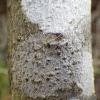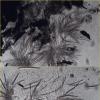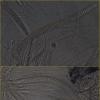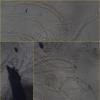
26-09-2014 13:48
 Rubén Martínez-Gil
Rubén Martínez-Gil
Hola a todos. Subo unas fotos de una Pulvinula qu

26-09-2014 15:13
 Alessio Pierotti
Alessio Pierotti
can someone help me with this work ?Booth, C.; O'R

25-09-2014 08:22
 Blasco Rafael
Blasco Rafael
Hola, Tengo ESTAS Muestras Recogidas en Hayedo - a

24-09-2014 20:25
Bonsoir les amis Peut etre j'avais recolté le me

24-09-2014 19:43
 Bernard Declercq
Bernard Declercq
Good evening,does anyone have following paper for

22-09-2014 22:08
 Rubén Martínez-Gil
Rubén Martínez-Gil
Hola a todos. Subo fotos de una Peziza que he enc

22-09-2014 08:03
 Beñat Jeannerot
Beñat Jeannerot
Adio à tous, Cette Helvella, récoltée aux Oule

23-09-2014 17:34
 Blasco Rafael
Blasco Rafael
Hola, tengo esta Peziza recogida en Hayedo--Abetal
Asci with 8 spores each; The spores are 1-septate when young and then develop other septa, up to 8-septate.
Asci: up to 215 x 12 um;
Spores:
(26.7) 29.2 - 33.7 (34.5) x (6.2) 6.5 - 7.9 (8.1) µm
Q = (3.9) 4 - 4.76 (4.8) ; N = 20
Me = 31.2 x 7.2 µm ; Qe = 4.4,
I will appreciate any hint for the classification.
Thanks in advance,
zaca

In fact, I thought this was a lichen, but I found no trace of an alga.
The last two sets of photos (except for the one on the left hand of the last) were taken after join a drop of melzer to the slide. This permits to see clearly the septation of the spores, which was not possible without it.
Thanks again,
zaca

It is well possible that the asci are inamyloid. Anyhow I would try Lugol for a possible hemiamyloid reaction.
The spores ar very characteristic, I think a lichenologist knows them.
I will follow your suggestions and try a new preparation, whenever possible. If I'll find anything different, it will be reported here.
Thanks,
zaca
Hi Zaca,
Like Zotto, I think it could be a lichen, with leprose thallus.
You can test chemical reactions on the thallus : K, P, C, KC.
How are ascomatas ? Perithecias ? Apothecias ?
Alain
The ascomata are perithecia. I made the spot tests and all chemical reactions were negative. Moreover, did new microscopic observation and found that there seems to be a brown or golden-green alga (perhaps of the genus Trentepohlia). I checked the reference mentioned below and, taking into account the microscopic data, found two genera of pyrenocarpous to which my specimen can belong: Porina or Strigula. I found, in particular, a species _Strigula stigmatella_ with similar features.
Many Thanks to Zotto and to Alain, for their comments that lead me to the possible solution,
zaca
Ref:
Alan Orange, British and Other Pyrenocarpous Lichens, 2013.
(available at: https://www.museumwales.ac.uk/media/13849/Orange,-A.-(2013)-British-and-other-pyrenocarpous-lichens.pdf)



